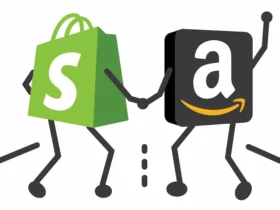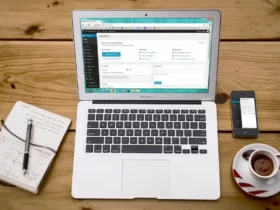Are you considering starting an Amazon dropshipping business? One of the most pressing questions you may have is whether or not it will be profitable. While dropshipping can be a flexible and low-cost fulfillment method, it’s important to weigh the pros and cons before diving in.
According to JungleScout, about 10% of Amazon sellers run a dropshipping business. However, profitability can vary depending on several factors such as product selection, pricing strategy, and competition. It’s important to do your research and understand the market demand for the products you plan to sell. Additionally, you’ll want to consider the costs associated with dropshipping such as shipping fees, marketplace fees, and potential returns.
Despite these factors, many sellers have found success with Amazon dropshipping. With the right approach and a bit of patience, it’s possible to build a profitable business. In this article, we’ll explore the ins and outs of Amazon dropshipping and provide insights on how to make it work for you.
Profitability of Amazon Dropshipping
If you’re considering starting an Amazon dropshipping business, one of the most important factors to consider is profitability. In this section, we’ll explore the profitability of Amazon dropshipping and how you can increase your profits.
Understanding Profit Margins
Profit margins are the difference between the cost of goods sold (COGS) and the price at which you sell them. In Amazon dropshipping, your profit margin is the difference between the price at which you purchase products from your supplier and the price at which you sell them on Amazon.
Amazon charges a 15% referral fee on most products sold on their platform. This means that you’ll need to factor this fee into your pricing strategy to ensure that you’re still making a profit. Additionally, you’ll need to factor in any other fees associated with your supplier, such as shipping costs, to accurately calculate your profit margin.
Typically, profit margins in Amazon dropshipping are thin, ranging from 10% to 30%. However, with the right pricing strategy and marketing tactics, you can increase your profit margins and make your business more profitable.
Increasing Profitability
To increase your profitability in Amazon dropshipping, you’ll need to focus on several key areas, including pricing, customer experience, and marketing.
Pricing
To maximize your profits, you’ll need to find products that offer a high profit margin. Look for products that have a low cost of goods sold but can be sold at a higher price on Amazon. Additionally, consider adjusting your pricing strategy to account for Amazon’s referral fees and any other fees associated with your supplier.
Customer Experience
Providing a positive customer experience is essential to increasing your profits in Amazon dropshipping. Make sure that your products are high quality and that you provide accurate product descriptions and images. Additionally, ensure that your shipping times are fast and that you respond quickly to customer inquiries and concerns.
Marketing
Marketing is another key factor in increasing your profitability in Amazon dropshipping. Consider using social media and other marketing channels to promote your products and drive traffic to your Amazon listings. Additionally, consider using Amazon’s advertising platform to increase visibility and sales.
In conclusion, while profit margins in Amazon dropshipping are typically thin, there are several strategies you can use to increase your profitability. By focusing on pricing, customer experience, and marketing, you can make your business more profitable and successful.
Navigating the Amazon Dropshipping Policy
If you’re considering Amazon dropshipping, it’s important to understand the platform’s policies to avoid any potential issues. Amazon has strict guidelines for dropshipping, and violating them can result in account suspension or even termination.
One of the most important policies to keep in mind is that Amazon prohibits dropshippers from using Prime shipping for orders. This means that if you’re dropshipping on Amazon, you cannot use Prime shipping as a delivery option. Instead, you’ll need to use a different shipping method.
Another key policy is that you must provide accurate and up-to-date information about your products, including their availability, shipping times, and pricing. You must also ensure that your products meet Amazon’s quality standards and that they are not counterfeit or infringing on any intellectual property rights.
It’s also important to note that Amazon has specific terms of service for dropshippers. These terms outline the requirements and restrictions for using Amazon’s platform for dropshipping, including the need to have a valid seller account, the obligation to fulfill orders promptly, and the requirement to provide customer service to buyers.
To ensure that you’re complying with Amazon’s policies and terms of service, it’s a good idea to regularly review them and make any necessary updates to your business practices. You can also reach out to Amazon’s seller support team if you have any questions or concerns about the policies or your account.
Overall, while navigating Amazon’s dropshipping policy can be challenging, it’s essential to follow the rules to avoid any potential issues and maintain a successful dropshipping business on the platform.
Dealing with Suppliers and Manufacturers
When it comes to Amazon dropshipping, dealing with suppliers and manufacturers is a crucial part of the process. Here are some tips to help you navigate this aspect of the business:
Choosing a Supplier
Choosing the right supplier is key to ensuring that you can make a profit with Amazon dropshipping. Here are some things to keep in mind when selecting a supplier:
- Look for suppliers that offer competitive prices and a wide range of products.
- Check the supplier’s reputation and reviews from other sellers.
- Make sure the supplier has a good track record of fulfilling orders in a timely manner.
- Consider the supplier’s shipping options and costs.
Working with Manufacturers
Working with manufacturers can be a bit more complicated than working with suppliers, but it can also be more profitable. Here are some tips to help you work with manufacturers:
- Research manufacturers that produce the products you want to sell.
- Contact the manufacturer and ask about their dropshipping policies and pricing.
- Negotiate pricing and terms with the manufacturer to ensure that you can make a profit.
- Make sure the manufacturer can handle the volume of orders you expect to receive.
Keep in mind that working with manufacturers can require more upfront investment and effort, but it can also result in higher profit margins.
Handling Returns and Customer Service
When it comes to dropshipping, handling returns and customer service can be a bit more complicated than with traditional e-commerce models. As an Amazon dropshipper, you are responsible for addressing customer inquiries, handling returns, and resolving any issues promptly. It’s important to keep in mind that unlike FBA orders, customer service must be handled by you as the seller.
One of the best ways to handle returns when dropshipping is to determine if it’s cheaper to let your customer keep the product and send a new one or to have them send it back to your supplier. This decision will depend on the cost of the product and the shipping fees. In some cases, it may be more cost-effective to let the customer keep the product, especially if it’s a low-value item.
When it comes to customer service, it’s important to be responsive and helpful. Amazon holds sellers accountable for their performance, so it’s crucial to respond to customer inquiries and complaints in a timely manner. This can help improve your seller rating and increase the likelihood of repeat business.
In addition to handling returns and customer service, it’s also important to have a clear refund policy in place. This policy should outline the circumstances under which a customer can receive a refund and the steps they need to take to initiate the process. Be sure to communicate this policy clearly to your customers to avoid any confusion or misunderstandings.
Overall, while handling returns and customer service can be challenging in the dropshipping model, it’s essential to provide excellent service to your customers to build a loyal customer base and maintain a positive reputation on Amazon.
Competing on Amazon
If you’re dropshipping on Amazon, it’s important to understand the competition and how to win the Buy Box. Here are some tips to help you succeed:
Understanding the Competition
When dropshipping on Amazon, you’re competing with other sellers who are selling the same or similar products. To stand out from the competition, you need to offer competitive prices, high-quality products, and excellent customer service.
One way to stay ahead of the competition is to monitor their prices and adjust yours accordingly. You can use tools like CamelCamelCamel or Keepa to track price changes and set up alerts when prices drop.
Another way to differentiate yourself from the competition is to offer unique products or bundles that aren’t available from other sellers. You can also focus on a specific niche or audience to attract buyers who are looking for something specific.
Winning the Buy Box
The Buy Box is the box on the right-hand side of the Amazon product detail page where customers can add items to their cart. Winning the Buy Box is important because it can increase your sales and visibility on Amazon.
To win the Buy Box, you need to meet Amazon’s performance metrics, including order defect rate, cancellation rate, and late shipment rate. You also need to offer competitive prices and have high seller ratings and positive reviews.
Here are some tips to help you win the Buy Box:
- Use Fulfillment by Amazon (FBA) to improve your shipping and handling metrics.
- Offer competitive prices and use automated repricing tools to stay competitive.
- Encourage buyers to leave positive reviews by providing excellent customer service and following up with them after the sale.
- Use external packaging and branding to make your products stand out and increase brand recognition.
Keep in mind that there are risks associated with dropshipping on Amazon, including account suspension and intellectual property infringement. It’s important to follow Amazon’s policies and guidelines and do your research before selling on the platform.
By understanding the competition and winning the Buy Box, you can increase your sales and grow your business on Amazon.
Alternative Platforms for Dropshipping
If you’re looking for an alternative to Amazon for your dropshipping business, there are a few other platforms you can consider. Here are two popular options:
Dropshipping Using Shopify
Shopify is one of the most popular ecommerce platforms out there, and for good reason. It offers a wide range of features and integrations that make it easy to set up and manage your online store.
One of the biggest advantages of using Shopify for dropshipping is that it offers a built-in dropshipping app called Oberlo. With Oberlo, you can easily find products to sell from AliExpress and import them into your Shopify store with just a few clicks.
Another advantage of using Shopify for dropshipping is that it offers a lot of customization options. You can choose from a wide range of themes and plugins to make your store look and function exactly how you want it to.
Dropshipping Using Ebay
Ebay is another popular platform for dropshipping. It has a huge customer base and offers a lot of flexibility when it comes to selling products.
One advantage of using Ebay for dropshipping is that it offers a lot of built-in tools and features to help you manage your listings and orders. For example, you can use Ebay’s listing templates to quickly create professional-looking listings, and you can use its order management tools to track and fulfill orders.
Another advantage of using Ebay for dropshipping is that it offers a lot of visibility. Ebay has a huge customer base, so if you can get your products in front of the right people, you have a good chance of making sales.
Overall, both Shopify and Ebay offer a lot of advantages for dropshipping. It’s up to you to decide which platform is the best fit for your business.
Frequently Asked Questions
How can I dropship on Amazon without any money?
Dropshipping on Amazon without any money can be challenging, but it’s not impossible. One option is to use a free trial on a dropshipping platform to get started. You can also negotiate with suppliers to see if they will let you pay for products after you sell them. However, keep in mind that this approach may limit your options for products and suppliers.
Is Amazon dropshipping profitable for beginners?
Amazon dropshipping can be profitable for beginners, but it’s important to understand that it’s not a get-rich-quick scheme. Success in dropshipping requires careful planning, research, and execution. You should also be prepared to invest time and effort into marketing and customer service. With the right approach, however, dropshipping on Amazon can be a profitable venture.
How much money can I make dropshipping on Amazon?
The amount of money you can make dropshipping on Amazon depends on several factors, including your niche, marketing strategy, and pricing strategy. Some sellers make hundreds or thousands of dollars per month, while others may not see significant profits. It’s important to set realistic expectations and understand that success in dropshipping requires hard work and persistence.
What are the most profitable dropshipping niches for Amazon?
Some of the most profitable dropshipping niches for Amazon include electronics, health and beauty, home and garden, and pet supplies. However, keep in mind that these niches are also highly competitive, so it’s important to do thorough research and find a unique angle to stand out from the competition. Additionally, it’s important to choose a niche that you are passionate about and have knowledge in.













